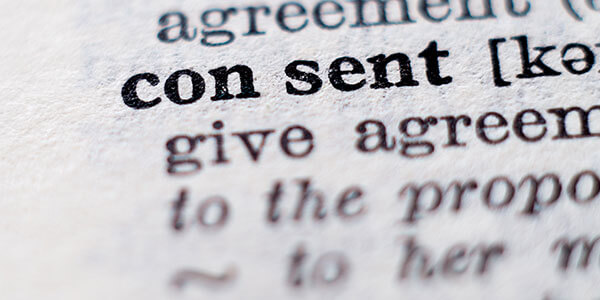
If you’ve been shooting professionally for any length of time, you know a photo release form is a must.
If you’re starting out as a pro photographer, you need to get your head around them.
Failure to get the right permissions and consent for photos to be taken can come back to bite you, big-time. So, if you want to protect yourself from future licensing headaches, consent is key.
That’s what release forms are for – giving and getting consent.
Photo release forms
The contract between photographer and client, a photo release form gives the client permission to use the images taken during the shoot. It states exactly how they can be used - to make prints, post on social media, or for advertising etc.
Say you’re a wedding photographer. Big day done, you give your clients a USB stick of 400-odd shots. Without a signed photo release form, there’s nothing to stop them getting prints made,* splashing the images all over social and producing books or albums of your work. All of which you could have made money from.
A signed release form protects your profit margin and your copyright.
Because UK law is clear. Unless the photographer is an employee, copyright on photographs belongs to the person who took them.
If your clients are confused about permissions, the BIPP’s guide to using images will set them straight. And if you’re after a photo release form template, there’s one here.
Model release forms
A model release form is the contract between photographer and model. Designed to protect both parties, it states exactly what a photographer may, or may not, do with the images of the model taken during the shoot.
Privacy laws in the UK are a bit blurry and still developing. But if you’re going to use the photos for commercial gain, you need a signed model release form. Failing to get one will make it harder to sell your picture to stock libraries, for example. For the majority of publishers, it’s a case of no release, no sale.
If you’re not sure what you’ll end up doing with the images – you might change your mind, post-shoot – cover yourself. Get signed consent. And if the models are children – get their parents to sign.
There’s currently no industry ‘standard’ for model release forms. The RPS has a template you can download here. It’s free to all photographers and comes with handy notes on how to use it.
But most agencies or publishers have their own requirements. So, if you know which agency you’re going to submit your work to, check out their website. They’ll probably have a downloadable template.
But do get a legal advice before you use a release form template. It may need adapting to fit your particular needs.
And remember, if you want to use images for a purpose not originally agreed to, you must get further, signed consent.
It’s also worth having photographers’ insurance. It doesn’t just cover your equipment or damage you might cause as you go about your business. It can protect things like infringement of intellectual property as well as other things you care about. You know, like your professional reputation.
*although any decent processing lab will usually refuse to make prints without the photographer’s written permission
freelancersphotographersrules and regulations
